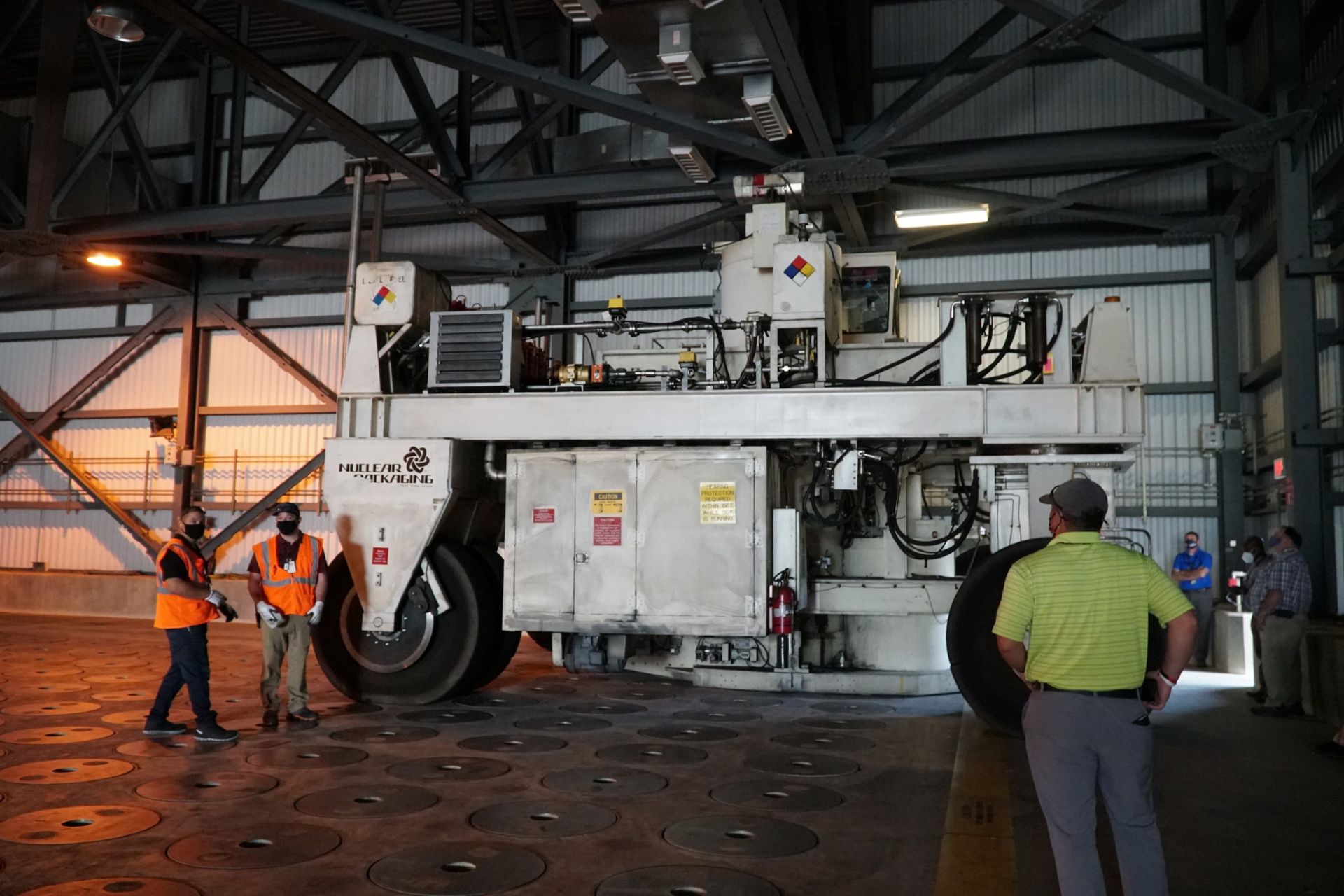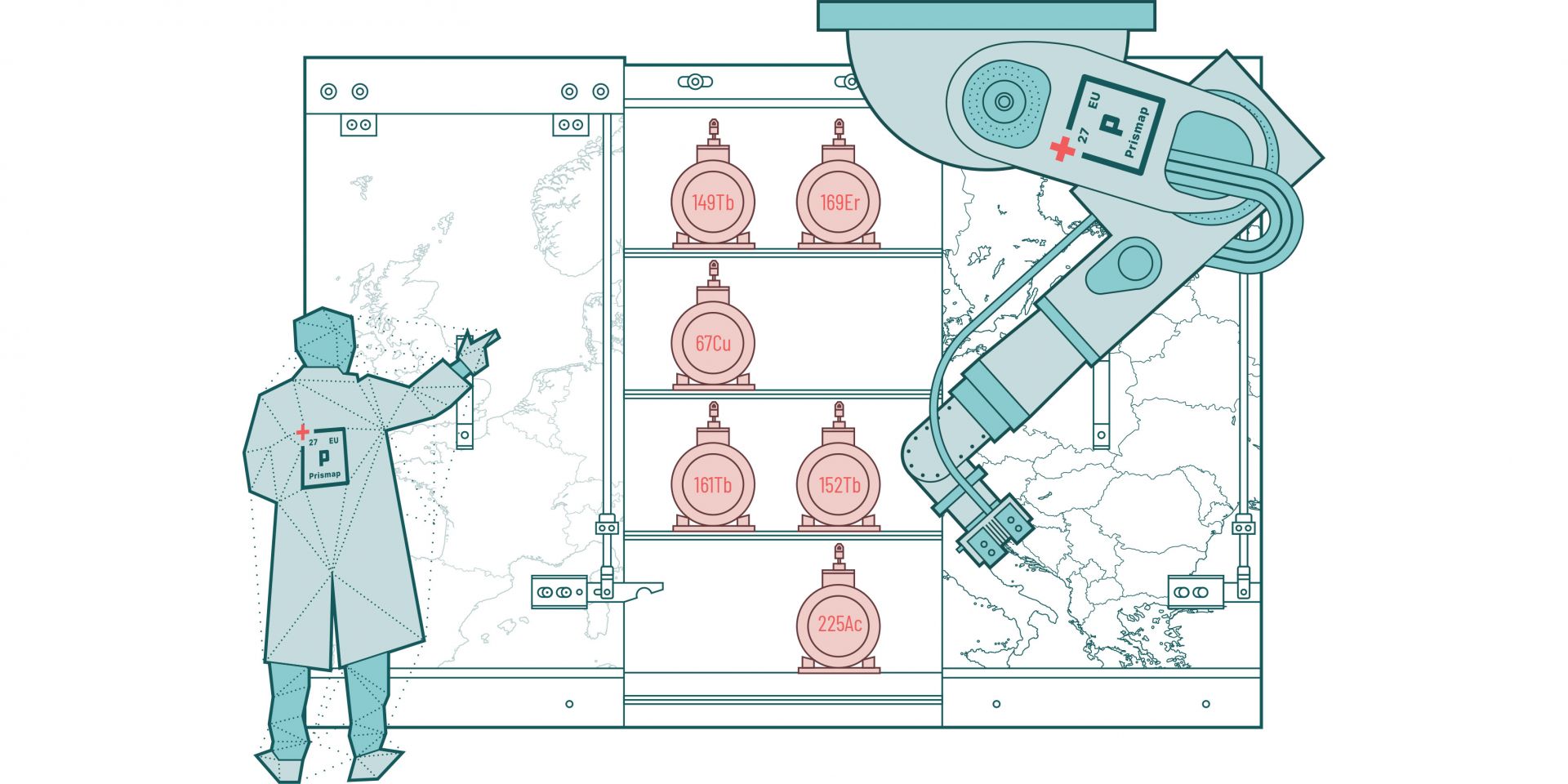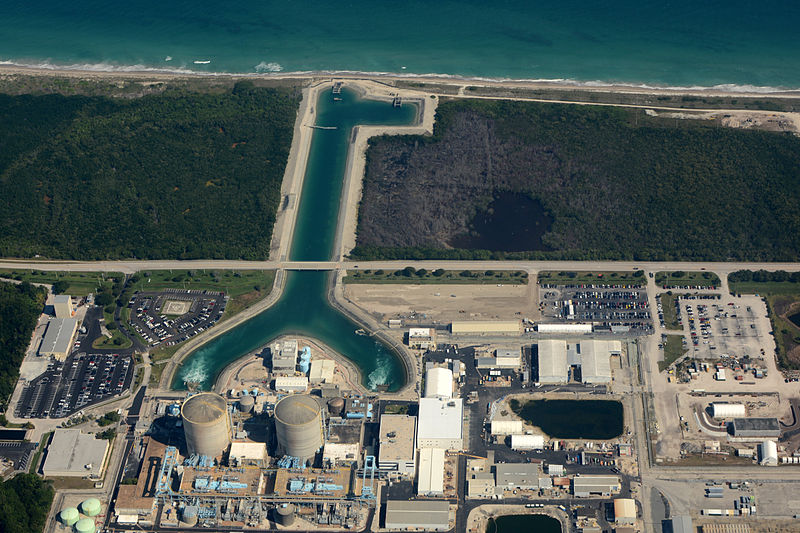Savannah River Remediation workers double-stack HLW canisters in an underground vault in Savannah River’s Glass Waste Storage Building 2 using a one-of-a-kind shielded canister transporter. (Photo: DOE)
The Department of Energy’s Office of Environmental Management (EM) has demonstrated the capability to expand the double-stacking of high-level waste canisters at the Savannah River Site in South Carolina. That approach will save the site’s cleanup program millions of dollars, according to the DOE.
The Sodium Pump Test Facility was the last DOE building to be demolished at the Energy Technology Engineering Center site in California. (Photo: DOE)
The demolition of the final of 18 DOE-owned buildings at the Energy Technology Engineering Center (ETEC) has been completed, according to the DOE. The ETEC is the former liquid metals research facility located at the Santa Susana Field Laboratory (SSFL), northwest of Los Angeles.
Bruce nuclear power plant in Ontario, Canada. (Photo: Bruce Power)
The first of eight 160-ton steam generators for Unit 6 at Canada’s Bruce nuclear power plant was installed last week as part of the facility’s major component replacement project. “Congrats to the MCR team and our partners, including @AeconGroup, @Framatome_CA, @UEandC, @mammoetglobal, @BWXT, and others who contributed to this historic moment,” Bruce Power tweeted on September 30.
The component was fabricated at BWXT Canada’s Cambridge, Ontario, location and was shipped to the Bruce site in late 2020, as shown in this video.
The vendor responsible for generator removal is the Steam Generator Replacement Team (SGRT), a 50-50 joint venture between Aecon and the Steam Generating Team, itself a partnership between Framatome and United Engineers & Constructors. In July, Framatome announced that SGRT had been awarded an approximately C$350 million (about $278 million) contract by Bruce Power to replace the steam generators at Units 3 and 4.
River Bend nuclear power plant
The Nuclear Regulatory Commission has proposed a $150,000 fine to Entergy Operations after conducting investigations that identified three willful violations of agency requirements at the company’s River Bend nuclear power plant. Located in Francisville, La., River Bend houses a 974-MWe boiling water reactor.
A conceptual image of collaboration across Europe. (Image: PRISMAP/SCIPROM)
Only a few of the more than 3,000 radioisotopes that scientists have synthesized in the laboratory are regularly used in diagnostic or therapeutic medicine. One significant barrier to the development of new medical radioisotopes is the difficulty of gaining access to radionuclides during the early stages of development and research. PRISMAP is a new medical radionuclide program designed to streamline that access for medical research in the European Union and the United Kingdom.
Map of the PJM Interconnection territory in dark blue. Image: PJM
A proposal by PJM Interconnection to modify the Federal Energy Regulatory Commission’s contentious minimum offer price rule (MOPR) order went into effect by default on Wednesday after the commission failed to take action on it.
According to a notice from the FERC secretary, “In the absence of commission action on or before September 28, 2021, PJM’s proposal became effective by operation of law. Accordingly, the effective date of the proposed tariff sheets is September 29, 2021. The commission did not act on PJM’s filing because the commissioners are divided two against two as to the lawfulness of the change.”
Workers perform maintenance during Byron’s refueling outage. (Photo: Exelon)
Exelon Generation announced yesterday that it is investing more than $300 million in capital projects at its Byron and Dresden nuclear plants in Illinois over the next five years and filling some 650 vacant positions across the state.
These actions are in response to Illinois Gov. J.B. Pritzker’s recent signing of S.B. 2408, the hard-won legislation that rescued the nuclear facilities from premature retirement.
The St. Lucie nuclear power plant.
Florida Power and Light Company is seeking to keep its St. Lucie nuclear plant in operation into the 2060s, and so far, so good: In early August, the utility submitted to the Nuclear Regulatory Commission a subsequent license renewal application for the facility’s two units, and last Friday, the NRC accepted the application for review.
Explore Kairos Power’s plans in a virtual open house.
By 2030, Kairos Power aims to demonstrate electricity production from a full-scale, 140-MWe fluoride salt–cooled high-temperature reactor, the KP-X. In service of that goal, Kairos plans to demonstrate Hermes, a scaled-down 35-MWth nonpower reactor, in Oak Ridge, Tenn.
Hermes is being built to “prove our ability to deliver affordable nuclear heat,” said Mike Laufer, Kairos Power chief executive officer and cofounder, as he explained Kairos’s plans to the local community during a September 28 webinar now available to view on demand. Laufer took questions, and Kairos took the opportunity to introduce a virtual open house that visitors can tour to view videos and interactive features and even submit comments.
Two battery Megapacks were destroyed in a July fire at Victorian Big Battery. Each battery is about the size of a standard shipping container. (Photo: Country Fire Authority)
Australia’s two large lithium-ion storage batteries are getting attention for all the wrong reasons. Hornsdale Power Reserve, a 150-MW battery collocated with a wind farm in South Australia, is being charged in federal court with failing to deliver on promises to respond to grid demands, and of being technically unable to deliver under the terms it was being paid to meet. Proceedings were filed September 22, just before the testing of a second Tesla-manufactured “Big Battery” resumed after a two-month delay following a fire in July.
The Bruce nuclear power plant in Ontario, Canada. (Photo: Bruce Power)
Bruce Power has received approval from the Canadian Nuclear Safety Commission (CNSC) to begin the production of lutetium-177, becoming the first power reactor globally to commercially produce the medical radioisotope. Isogen, a joint venture between Framatome and Kinectrics, will produce Lu-177 at Bruce’s eight-unit CANDU nuclear power plant in Ontario, Canada, using Isogen’s isotope production system (IPS).
Spent nuclear fuel in dry storage at the decommissioned Zion nuclear power plant in Illinois.
Congress needs to take action to break the impasse over a permanent solution for commercial spent nuclear fuel, according to a report by the U.S. Government Accountability Office. The GAO recommends that Congress amend the Nuclear Waste Policy Act (NWPA) to authorize a new consent-based siting process, restructure the Nuclear Waste Fund, and direct the Department of Energy to develop and implement an integrated waste management strategy.
The GAO also recommends that the DOE finalize the consent-based process it began in 2015 for siting consolidated interim storage and permanent geologic repository facilities. The DOE agrees with that recommendation.


















 The 2021
The 2021 